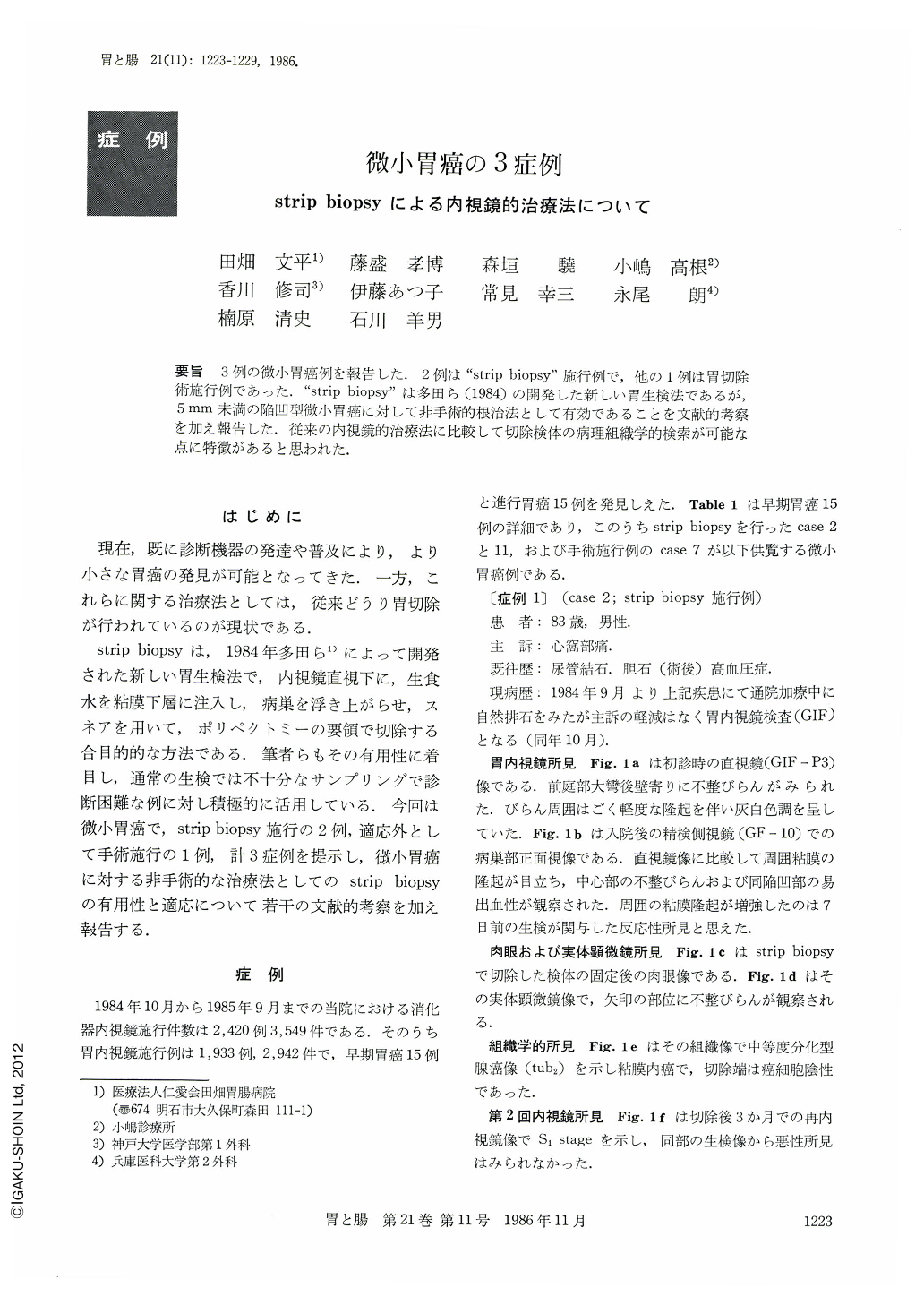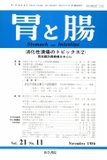Japanese
English
- 有料閲覧
- Abstract 文献概要
- 1ページ目 Look Inside
要旨 3例の微小胃癌例を報告した.2例は“strip biopsy”施行例で,他の1例は胃切除術施行例であった.“strip biopsy”は多田ら(1984)の開発した新しい胃生検法であるが,5mm未満の陥凹型微小胃癌に対して非手術的根治法として有効であることを文献的考察を加え報告した.従来の内視鏡的治療法に比較して切除検体の病理組織学的検索が可能な点に特徴があると思われた.
The development and diffusion of devices for diagnosis have already made it possible to detect minute carcinomas. However conventional gastrectomy is still applied as treatment. Strip biopsy is a new gastric biopsy developed by Tada et al in 1984. In this method, physiological saline solution is injected into the submucosal layer and, with a snare, resection is performed in the same way as in a polypectomy.
In the present report, three cases of minute carcinomas of the stomach are introduced. While strip biopsy was applied to two of them, one case was treated surgically as strip biopsy was not indicated as a suitable method. We report on the usefulness of, and possibilities for, strip biopsy as a nonsurgical therapy for minute carcinomas of the stomach.
The problems we encountered in our application of endoscopical therapy using strip biopsy were, 1) The infiltration of carcinoma into the submucosal layer or vesseles and, 2) The metastasis of lymphnodes. As for the former problem, it was necessary to perform gastrectomy. We think that, at the present stage, endoscopic therapy should be limited in its use to carcinoma without syra-invasion and ly or v factors.
The findings of Sakita et al have shown that lymph nodal metastasis has been observed in 4.0% of cases of intramucosal carcinoma and 5.4% of cases of minute carcinomas smaller than 5 mm at the greatest dimension.
In 15,933 cases (17,212 lesions), where the intramucosal carcinoma were less than 5 mm in diameter at the greatest dimension, we identified early gastric carcinomas in only 5 cases (5 lesions).
Also, among these intramucosal carcinomas less than 5 mm in diameter, lymph nodal metastasis was not identified. Based on this report, the authors believe that the rate of risk is low for intramucosal carcinomas of 5 mm or less in size, regardless of the presence or absence of lymph nodal metastasis, and strip biopsy can be valuable as an endoscopic therapy against minute carcinoma less than 5 mm in size.
As the specimens 2-3 cm in length and 1-2 cm in width (including the submucosal layer) can be excised, it is possible to excise even a focus of 1- 2 cm by using this method twice. However, for a focus exceeding 5 mm, with a possible involvement of lymph nodal metastasis, it is difficult to perform endoscopic therapy.
The follow-up data are insufficient, and satisfactory studies have not been made concerning the advantages or disadvantages of excision by the present method.
On account of this, endoscopic therapy was only perfomed on patients on whom we couldn't operate (those who rejected surgery).
In the future, the advances in techniques and knowledge of clinicopathology may make it possible to use strip biopsy on carcinomas of 10 mm or more in size, provided there are no indications of lymph nodal matastasis.

Copyright © 1986, Igaku-Shoin Ltd. All rights reserved.


